Complete Solutions to Alcohols, Phenols And Ethers of chapter ALCOHOLS, PHENOLS AND ETHERS of Class 12 book with complete answers and questions
| Class 12 | CHEMISTRY |
| Chapter | ALCOHOLS, PHENOLS AND ETHERS |
| NCERT EXEMPLAR | Alcohols, Phenols And Ethers |
| Number Of Questions | 74 |
| Academic Year | 2023-24 |
Chlorination of toluene in the presence of light and heat followed by treatment with aqueous NaOH gives
02:26View SolutionHow many alcohols with molecular formula `C_(4)H_(10)O` are chiral in nature ?
08:15View Solution`R-OH + HX to R -X + H_(2)O`
In the above reaction the reactivity of different alcohols is04:02View Solution`CH_(3)CH_(2)OH` can be converted into `CH_(3)CHO` by........... .
04:47View SolutionThe process of converting alkyl halides into alcohols involves.......... .
05:16View SolutionWhich of the following compounds is aromatic alcohol ?
 05:04View Solution
05:04View SolutionGive IUPAC name of the compound given below.
`CH_(3)-underset(Cl)underset(|)(CH)-(CH_(2))-CH_(2)-underset(OH)underset(|)(CH)-CH_(3)`02:42View SolutionIUPAC name of m-cresol is.......... .
01:40View SolutionIUPAC name of the compound `CH_(3)-underset(CH_(3))underset(|)(CH)-OCH_(3)` is............ .
03:36View SolutionWhich of the following species can act as the strongest base ?
06:04View SolutionWhich of the following compounds will react with sodium hydroxide solution in water ?
05:57View SolutionPhenol is less acidic than
02:59View SolutionWhich of the following is most acidic ?
04:46View SolutionMark the correct order of decreasing acid strength of the following compounds.
 07:12View Solution
07:12View SolutionMark the correct increasing order of reactivity of the following compounds with HBr/HCl.
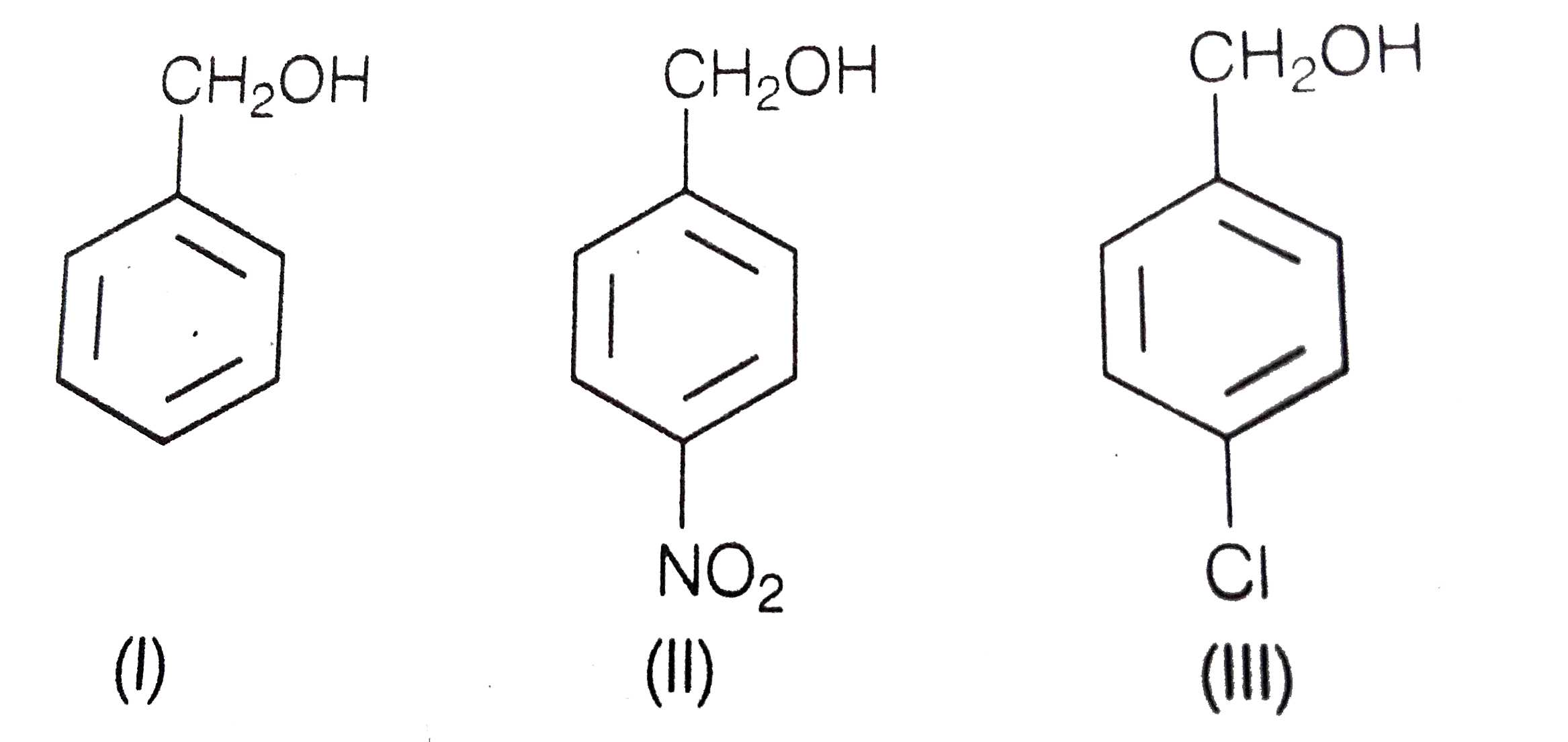 08:01View Solution
08:01View SolutionArrange the following compounds in increasing order of boiling point :
Prpane-1-ol, butan-1-ol, butan-2-ol, pentan-1-ol04:56View SolutionWhich of the following are used to convert RCHO into `RCH_(2)OH` ?
04:23View SolutionWhich of the following reactions will yield phenol ?
02:49View SolutionWhich of the following reagents can be used to oxidise primary alcohols to aldehydes ?
02:51View SolutionPhenol can be distinguished from ethanol by the following reagents except
01:35View SolutionWhich of the following are benzylic alcohols ?
04:03View SolutionWhat is the structure and IUPAC name of glycerol ?
01:31View SolutionWrite the IUPAC name of the following compounds.
(a) `CH_(3)-underset(CH_(3))underset(|)(CH)-underset(OH)underset(|)(CH)-underset(C_(2)H_(5))underset(|)(CH)-underset(OH)underset(|)(CH)-CH_(3)`
(b)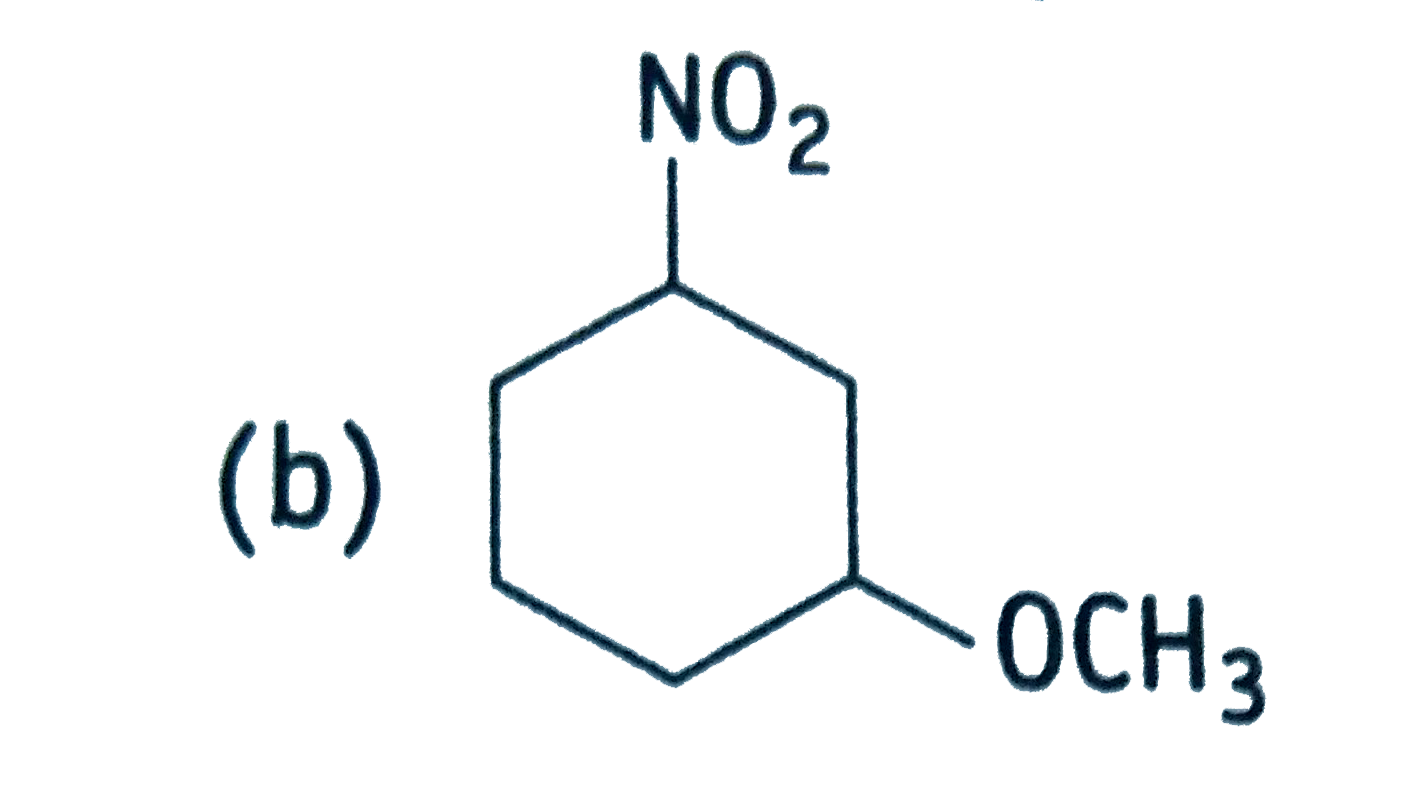 04:15View Solution
04:15View SolutionWrite the IUPAC name of the compound given below.
`{:(CH_(3)-CH_(2)-C" = "C-OH),(" |"" |"),(" "CH_(3)" "CH_(2)OH):}`01:23View SolutionName the factors responsible for the solubility of alcohols in water.
04:09View SolutionWhat is denatured alcohol ?
02:51View SolutionSuggest a reagent for the following conversion.
 03:00View Solution
03:00View SolutionOut of 2-chloroethanol and ethanol which is more acidic and why ?
02:41View SolutionSuggest a reagent for conversion of ethanol to ethanal.
02:43View SolutionSuggest a reagent for conversion of ethanol to ethanoic acid.
02:45View SolutionOut of o-nitrophenol and p-nitrophenol, which is more volatile ? Explain?
04:35View SolutionOut of o-nitrophenol and o-cresol which is more acidic ?
05:46View SolutionWhen phenol is treated with bromine water, white precipitate is obtained. Give the structure and the name of the compound formed.
02:05View SolutionWhat is the correct increasing order of acidic strength in the following :
(i) Phenol (ii) p-cresol (iii) p-nitrophenol (iv) o-nitrophenol ?05:38View SolutionAlcohols react with active metals e.g., Na, K etc., to give corresponding alkoxides. Write down the decreasing order of reactivity of sodium metal towards primary, secondary and tertiary alcohols.
03:23View SolutionWhat happens when benzene diazonium chloride is heated with water ?
01:35View SolutionArrange the following compounds in decreasing order of acidity.
`H_(2)O, ROH, HC -= CH`03:42View SolutionName the enzymes and write the reactions involved in the preparation of ethanol from sucrose by fermentation.
02:23View SolutionHow can propan-2-one be converted into tert-butyl alcohol ?
03:19View SolutionWrite structural formula for all the isomeric alcohols having the molecular formula `C_(4)H_(10)O`.
03:27View SolutionExplain why is OH group in phenols more strongly held as compared to OH group in alcohols ?
05:05View SolutionExplain why nucleophilic substitution reactions are not very common in phenols.
01:57View SolutionPreparation of alcohols from alkenes involves the electrophilic attack on alkene carbon atom. Explain its mechanism.
05:25View SolutionExplain why is O=C=O non polar while R-O-R is polar ?
02:54View SolutionWhy is the reactivity of all the three classes of alcohols with conc. HCl and `ZnCl_(2)` (Lucas reagent) different ?
03:05View SolutionWrite steps to carry out the conversion of phenol to aspirin.
05:08View SolutionNitration is an example of aromatic electrophilic substitution and its rate depends upon the group already present in the benzene ring. Out of benzene and phenol, which one is more easily nitrated and why ?
04:09View SolutionIn Kolbe's reactio insteaded of phenol, phenoxide ion is treated with carbon dioxide. Why ?
02:32View SolutionDipole moment of phenol is smaller than that of methanol. Why ?
04:08View SolutionEthers can be prepared by Williamson synthesis in which an alkyl halide is reacted with sodium alkoxide. Di-tert-buty ether can't be prepared by this method. Explain
02:51View SolutionWhy is the `C-O-H` bond angle in alcohols slightly less than the tetrahedral angle whereas the C-O-C bond angle in ether is slightly greater?
03:52View SolutionExplain why low molecular mass alcohols are soluble in water ?
02:32View SolutionExplain why p-nitrophenol is more acidic than phenol ?
01:37View SolutionExplain why alcohols and ethers of comparable molecular mass have different boiling points?
02:16View SolutionThe carbon-oxygen bond in phenol is slightly stronger than that in methanol. Why ?
03:44View SolutionArrange water, ethanol and phenol in increasing order of acidity and give reason for your answer.
06:02View SolutionMatch the structures of the compounds given in Column I with the name of the compounds given in Column II.
 04:38View Solution
04:38View SolutionMatch the starting material given in Column I with the products formed by these (Column II) in the reaction with HI.
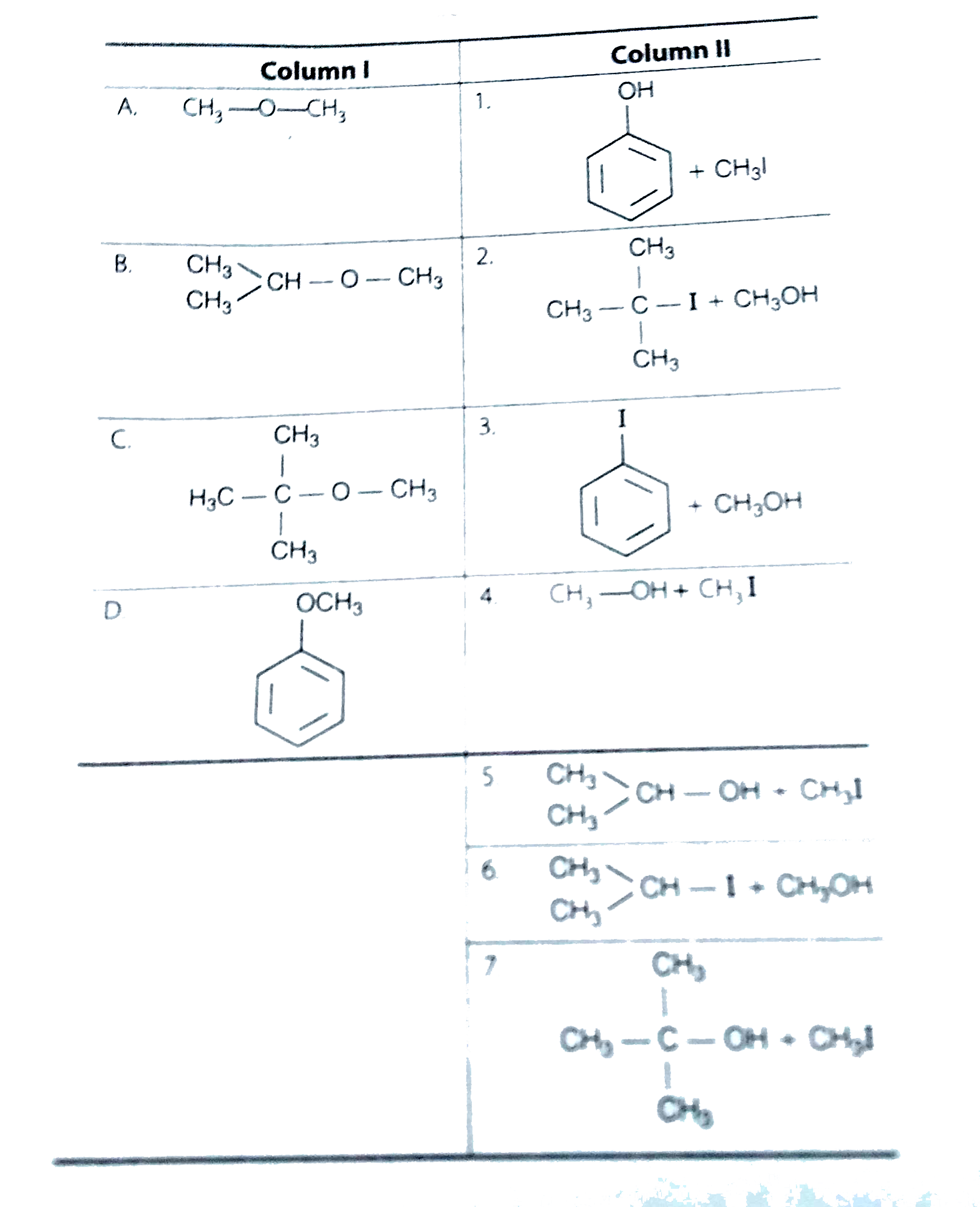 04:08View Solution
04:08View SolutionMatch the items of Column I with items of Column II.
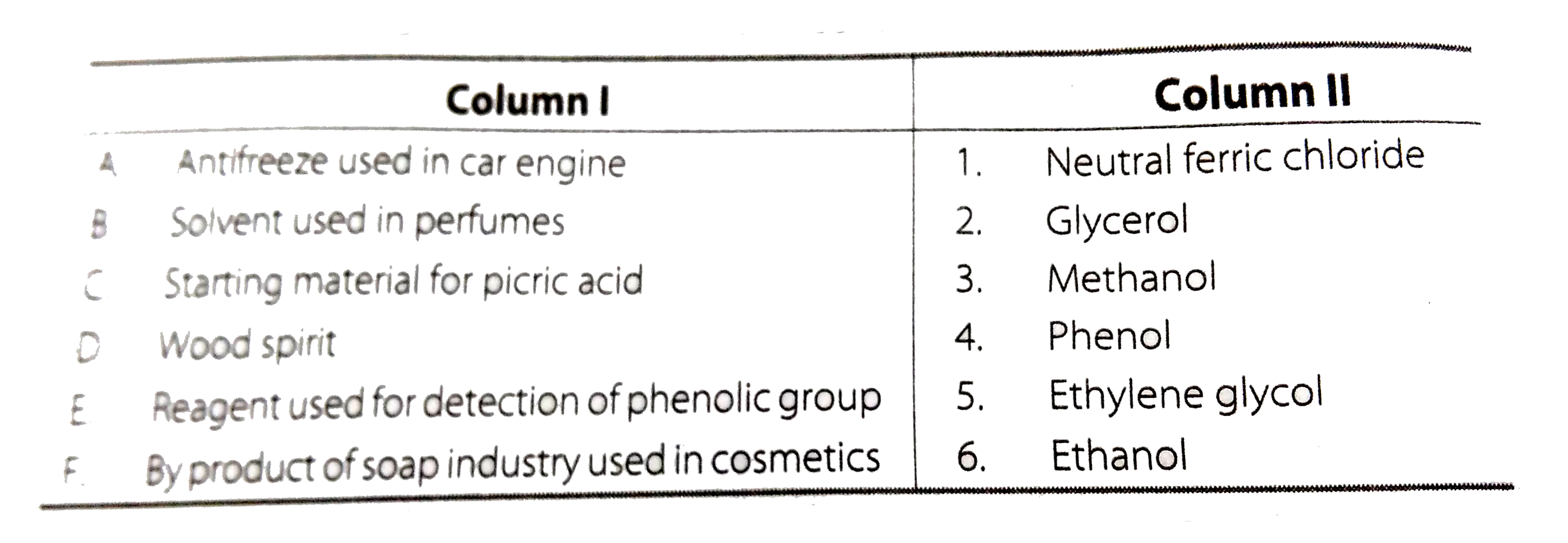 01:30View Solution
01:30View SolutionMatch the items of Column I with items of Column II.
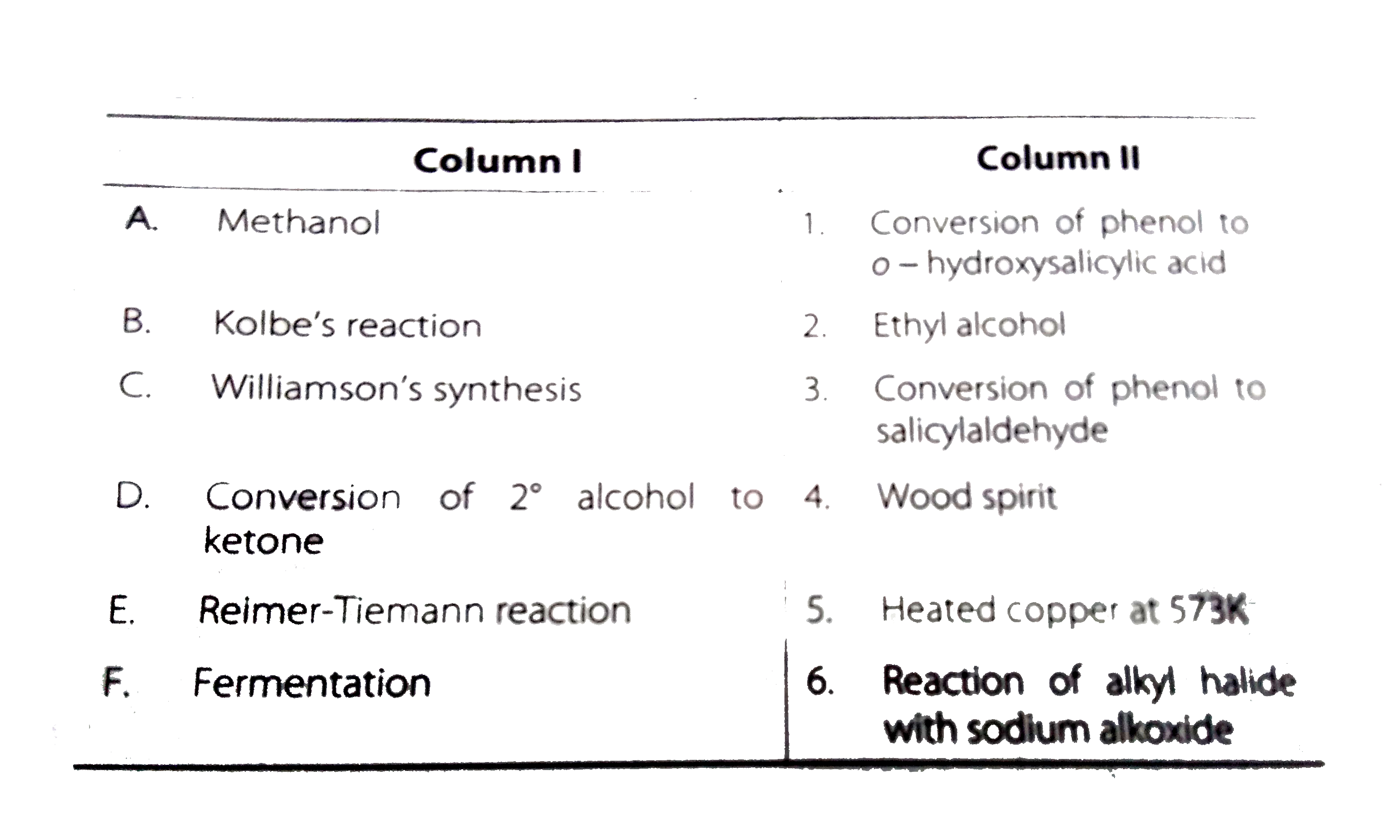 05:02View Solution
05:02View SolutionAssertion (A) Addition reaction of water to but-1-ene in acidic medium yields butan-1-ol.
Reason (R) Addition of water in acidic medium proceeds through the formation of primary carbocation.03:23View SolutionAssertion (A) p-nitrophenol is more acidic than phenol.
Reason (R) Nitro group helps in the stabilisation of the phenoxide ion by dispersal of negative charge due to resonance.04:03View SolutionAssertion (A) IUPAC name of the compound
`CH_(3)-underset(CH_(3))underset(|)(CH)-O-CH_(2)-CH_(2)-CH_(3)` is 2-ethoxy-2-methylethane
Reason (R) In IUPAC nonmenclature, ether is regarded as hydrocarbon derivative in which a hydrogen atom is replaced by -OR and or -OAr group [where, R = alkyl group and Ar = aryl group].03:03View SolutionAssertion (A) Bond angle is ethers is slightly less than tetrahedral angle.
Reason (R) There is a repulsion between the two bulky (-R) groups.01:28View SolutionAssertion (A) Boiling points of alcohols and ethers are high.
Reason (R) They can form intermolecular hydrogen-bonding.02:32View SolutionAssertion (A) Like bromination of benzene, bromination of phenol is also carried out in the presence of Lewis acid.
Reason (R) Lewis acid polarises the bromine molecule.03:01View SolutionAssertion (A) o-nitrophenol is less soluble in water than the m and p-isomers.
Reason (R) m and p-nitrophenols exist as associated molecules.04:18View SolutionAssertion (A) Ethanol is a weaker acid than phenol.
Reason (R) Sodium ethoxide may be prepared by the reaction of ethanol with aqueous NaOH.03:45View SolutionAssertion (A) Phenol forms 2, 4, 6-tribromophenol o treatement with `Br_(2)` in carbon disulphide at 273K.
Reason (R) Bromine polarises in carbon disulphide.02:18View SolutionAssertion (A) Phenols give o-and p-nitrophenol on nitration with conc. `HNO_(3)` and `H_(2)SO_(4)` mixture.
Reason (R) `-OH` group in phenol is o-,p-directing.03:03View SolutionWrite the mechanism of the reaction of HI with methoxybenzene.
02:22View Solution(a) Name the starting material used in the industrial preparation of phenol.
(b) Write complete reaction for the bromination of phenol in aqueous and non-aqueous medium.
(c) Explain why Lewis acid is not required in bromination of phenol ?04:18View SolutionHow can phenol be converted to aspirin ?
02:56View SolutionExplain a process in which a biocatalyst is used industrial preparation of a compound known to you.
02:34View Solution
Alcohols, Phenols And Ethers questions and complete solutions for chapter ALCOHOLS, PHENOLS AND ETHERS of CHEMISTRY of Class 12
